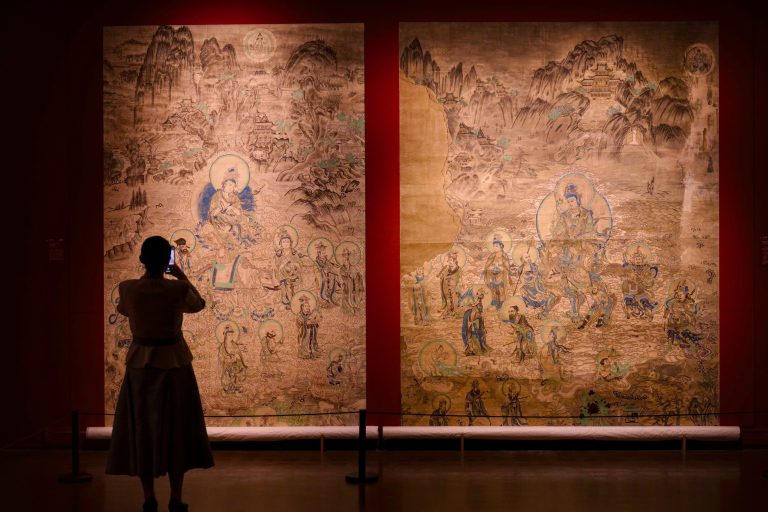A unique exhibition titled “The Great Art of Dunhuang” opened on 20th September at the China Art Museum in Shanghai, displaying an extensive collection of cultural treasures from Dunhuang. Organised as part of the 35th Shanghai Tourism Festival, the exhibition will be available to the public until December 20th, offering a three-month-long journey through ancient Chinese art and history.
The event is curated under the guidance of the Shanghai Municipal Administration of Culture and Tourism and aims to provide visitors with an immersive experience of Dunhuang’s historical significance through rare artifacts and artistic reproductions of iconic caves, wall paintings, and sculptures.
An Immersive Cultural Experience
Ji Xianlin, a distinguished scholar and historian, famously said, “There are only four cultural systems in the world with long-standing histories, expansive territories, and lasting influences: China, India, Greece, and Islam. Dunhuang, located in China, is the only place where all four of these cultural systems converge.”
Building on this legacy, the exhibition displays 168 representative and rare artifacts from the Dunhuang Academy, six of which are being presented in Shanghai for the first time. Additionally, reproductions of six Mogao Caves, along with rare manuscripts, are also featured. The exhibition entrance is designed to recreate the feeling of being in the Gobi Desert, complete with the sound of camel bells, immediately immersing visitors in the unique atmosphere of Dunhuang.
Four Unique Chapters
The exhibition unfolds in four thematic chapters, each offering a unique perspective on Dunhuang’s cultural and historical importance.
- Chapter 1: “The Silk Road – Dunhuang” explores the historic journey of Zhang Qian, whose expedition laid the foundation for the first “Silk Road.” Over time, as merchants from different regions converged, Dunhuang became a vibrant centre for cultural exchange.
- Chapter 2: “The Cave – Pure Land,” serves as the focal point of the exhibition, showcasing full-scale replicas of six iconic caves. Visitors will see Cave No. 285 from the Western Wei Dynasty, alongside Caves No. 45, 320, 158, and 17 from the Tang Dynasty, and Cave No. 3 from the Yuan Dynasty.
- Chapter 3: “The Encounter – Library Cave” reveals the treasure trove of artifacts found in Cave No. 17, often described as the “encyclopedia of the Middle Ages.” This chapter also explores how modern technology is being used to digitally preserve these valuable relics.
- Chapter 4: “Faith – Inheritance” honours the generations of people who have worked tirelessly to preserve the Mogao Caves and their cultural significance for future generations.
Shanghai’s Global Influence
At the exhibition’s opening, Bai Jian, a representative from the Gansu Province Cultural Relics Bureau, remarked: “Dunhuang was once a major transportation hub between East and West, playing a key role in cultural exchanges. Today, Shanghai, as a global metropolis, represents a modern centre where history, culture, and innovation converge. This exhibition allows us to introduce Dunhuang’s rich heritage to the world and foster further international exchanges.”
To enhance the visitor experience, several newly launched cultural tourism products will be offered. International visitors who book select hotels via Expedia will receive complimentary exhibition tickets. Additionally, the Shanghai Jiushi Group has introduced the Shanghai Pass – Dunhuang Dream Card, which allows visitors to make payments at various attractions, stores, and restaurants across the city.
